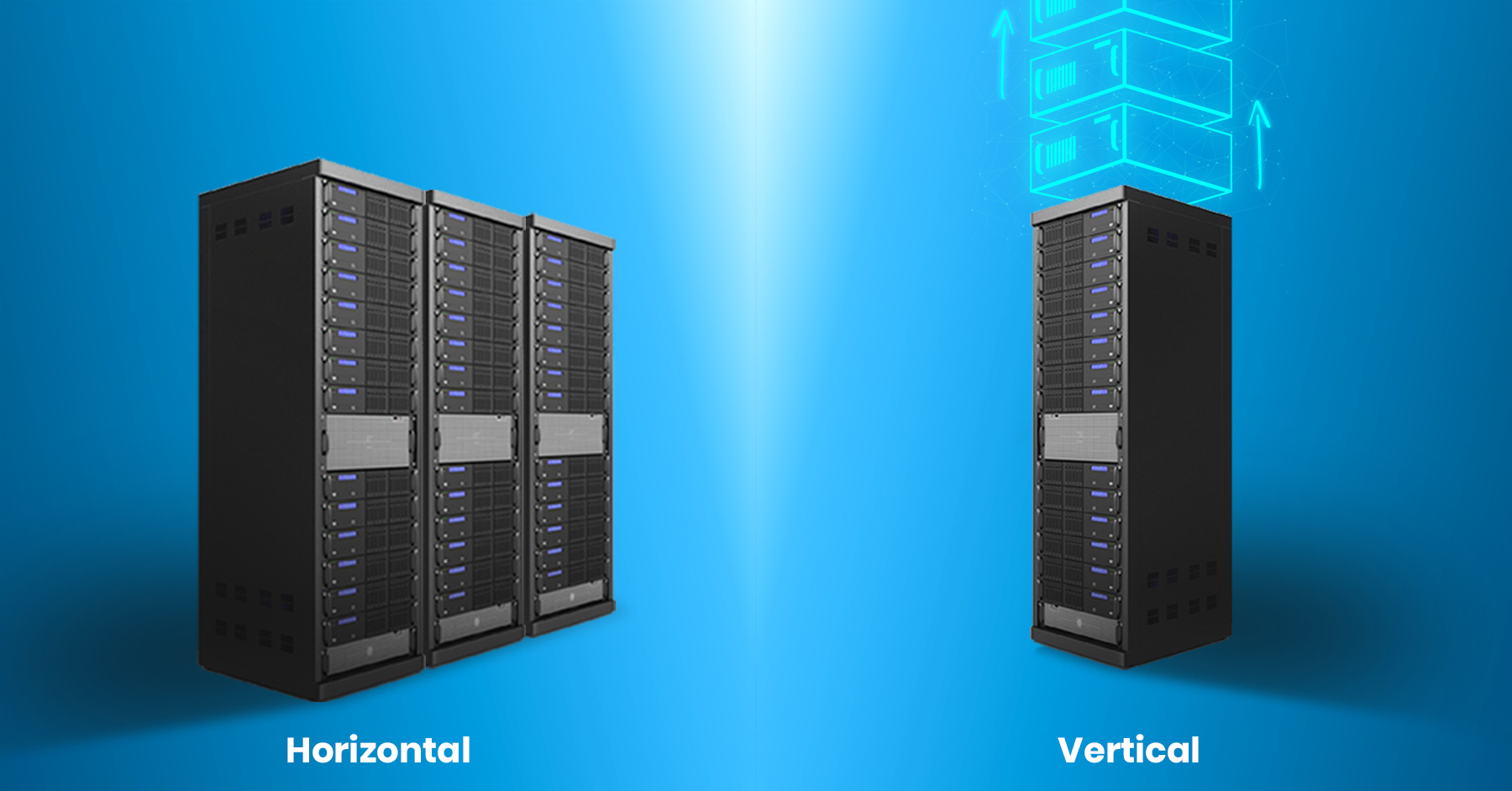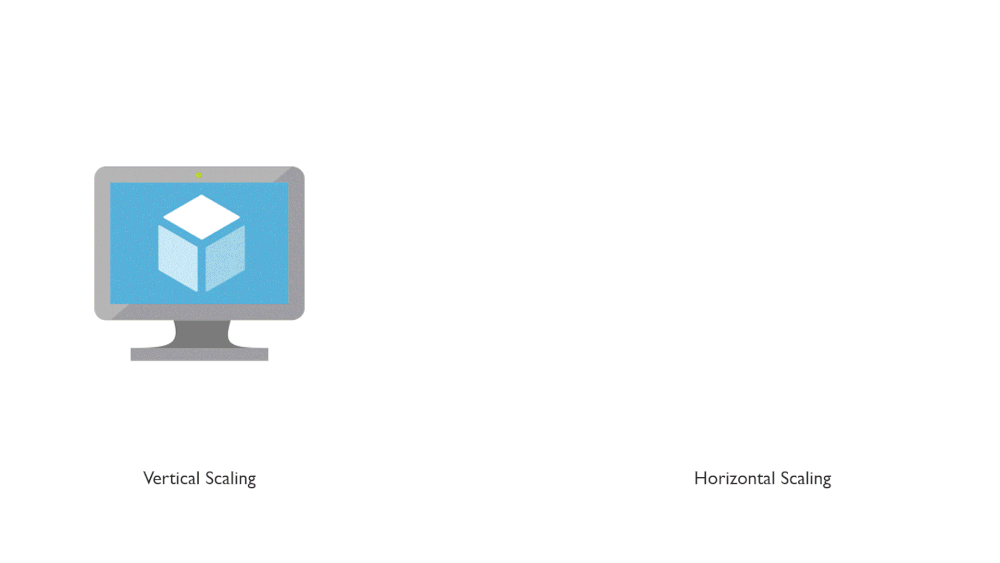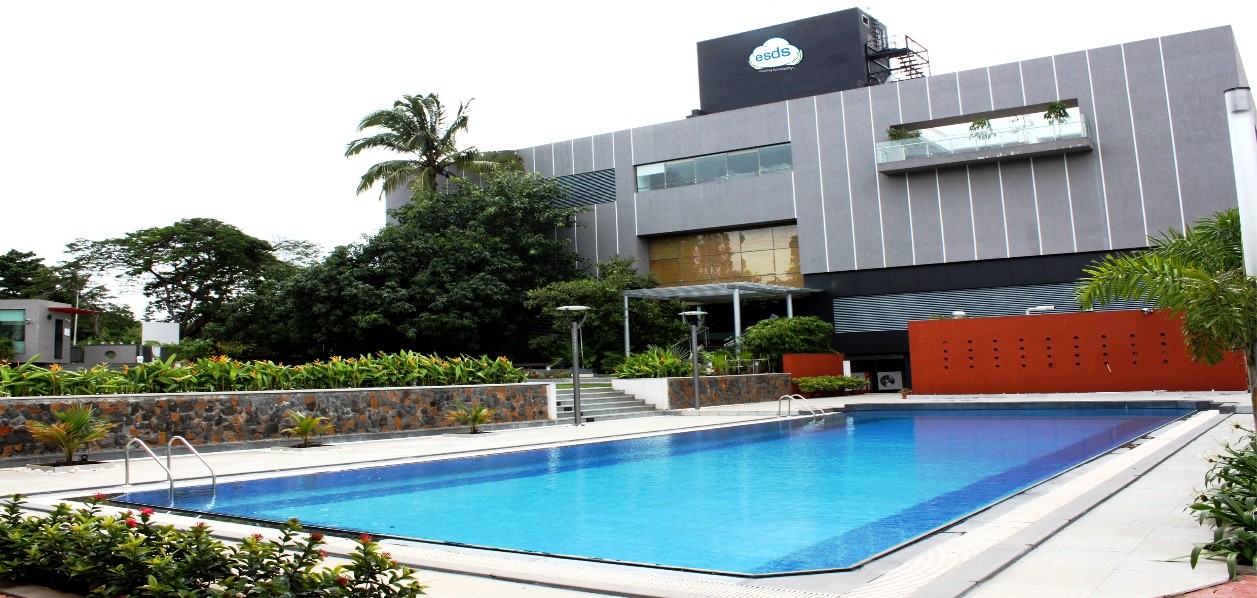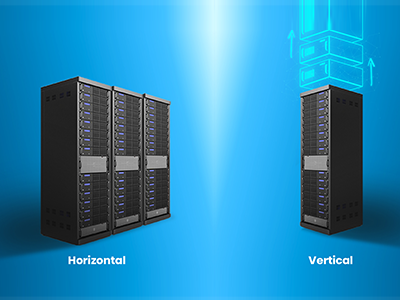What is the Difference Between Horizontal & Vertical Scaling?
The dawn of Digital Transformation has marked the acceptance of Cloud technology across the globe. Fuelling progressive application development, the Cloud has turned out to be the stepping-stone for the agile business world.

The Cloud-based architecture delivers flexible and on-demand access to the resources, nurturing the latest digital business offerings. To support the dynamically changing business priorities, the Cloud infrastructure ensures easy Scaling of IT resources. The Scalability of Cloud infrastructure is an essential feature for optimizing business operations.

What is the Scalability of a Cloud Infrastructure?
The system’s capacity to expand from its existing configuration to handle the rising workload is termed Scalability. Businesses can scale the Cloud infrastructure by adding extra hardware or upgrading the current hardware. Scalability is the hallmark of Cloud technology, ensuring effective utilization of resources enabling seamless functioning of business operations.
Virtualization facilitates flexible Scaling of Cloud architecture. Virtual machines can be easily scaled up and down, unlike physical machines.
What are the Benefits of Cloud Scaling?
- Fast and Easy
Cloud Scaling architecture enables instructing additional VMs to manage the increasing workloads with just a few clicks. It eliminates the delay caused due to rising workloads.
- Cost efficiency
Scaling horizontally or vertically is highly cost-efficient compared to an infrastructure where resources are idle most of the time.
- Optimized Performance
A scalable Cloud architecture efficiently manages a drastic rise and fall in traffic, thus optimizing the performance. It ensures the effective utilization of resources, thus eliminating idle resources or insufficient resource circumstances.
- Capacity
The scalable architecture of the Cloud expands its capacity to manage the growing business requirements.
Auto-Scaling Architecture
The Auto-Scaling architecture of the Cloud computing model aims to optimize resources utilized by Cloud applications and minimize human intervention. The architecture reduces errors due to manual interruption thus, saving time and money.

Vertical Scaling
Vertical Scaling is termed the Scale-up approach. In technical words, vertical Scaling is defined as increasing a single machine’s capacity with the rising resources in the same logical server or unit. Vertical Scaling involves adding resources like processing power, storage, and memory to the existing hardware or software, enhancing the system’s capacity.
Let’s consider a business website; with the rising business graph, there are more hits on the website. The server performance starts degrading with an increase in hits. The load is managed by Scaling the resources like CPUs (Processors), RAM, disk capacity etc.

Vertical Scaling ensures boosting the power of an individual server. Computing enables adding and subtracting of resources like memory and storage, etc.
Benefits of Vertical Scaling
1. Flexible Scaling of resources
2. Consumes less power
3. Lower cooling cost
4. Software cost-effective
5. Reduced administrative efforts to manage a single system
Horizontal Scaling
Horizontal Scaling is an approach to enhance the performance of the server node by adding new instances of the server to the existing servers to distribute the workload equally. The strategy involves decreasing the server’s load rather than expanding the capacity of the individual server. The Horizontal Scaling strategy is also termed Scaling out. Load balancing, clustering, and distributed file system are crucial strategies for Horizontal Scaling. Horizontal Scaling caters to portioning of the data where each node contains a single part of the data.

Businesses choose horizontal Scaling to enhance the I/O concurrency, reduce the load on existing nodes and expand disk capacity. The servers’ ability to interchangeably manage a single session or millions of single sessions is the epitome of Horizontal Scaling.
Benefits of Horizontal Scaling
1. Flexible Scaling tools
2. Easy fault-tolerance
3. Enhanced resilience due to discrete, multiple systems
4. Easy to upgrade
5. Limitless Scaling with endless additions of server instances
6. Cost-effective implementation
Difference between Horizontal and Vertical Scaling
| Horizontal Scaling | Vertical Scaling |
| Horizontal Scaling is defined as the ability to extend capacity by interfacing different hardware or software entities | Vertical Scaling is defined as the ability to increase an existing system’s capacity by adding resources |
| It is based on partitioning where each node contains a single part of data | The data is present on a single node and is scaled through multicore |
| It is referred to as Scale-out | It is referred to as Scale-up |
| The licensing fee is costly | The licensing is cost-effective |
| It requires a load balancer to distribute load among the servers within a system | Scaling the server capacity enhances the load capacity of the server |
| It implies boosting the power of individual server with the existing server | It implies boosting the power of the individual server |
Wrap Up
A Cloud-computing model’s Scalability is defined as the ability to seamlessly and instantly increase or decrease an IT solution’s size or capacity. There are two types of scalabilities in the Cloud architecture, i.e., Vertical Scaling and Horizontal Scaling. A server’s ability to enhance its capacity to handle the increasing workload is termed Vertical Scaling. A system’s ability to add new instances to manage the distributed workload is Horizontal Scaling.
The Cloud service providers like ESDS – The Digital Transformation catalyst offer auto Scaling Cloud architecture to optimize resources’ performance.

- What is the Difference Between Horizontal & Vertical Scaling? - March 26, 2021
- Blockchain Beyond Cryptocurrencies – Programmable Trust in Human and Computers - November 10, 2020
- CryptoCurrency – A Trust-less Exchange of Value - March 6, 2018

nice explaination